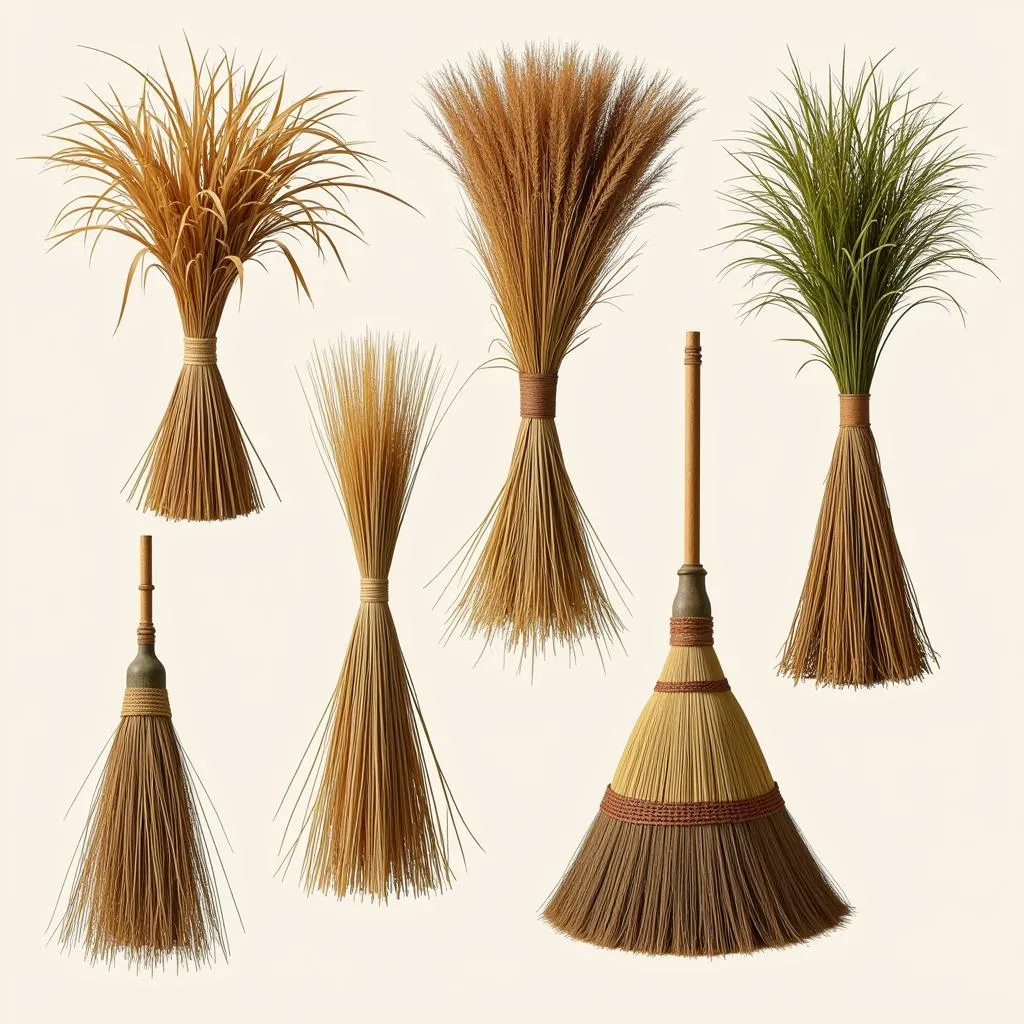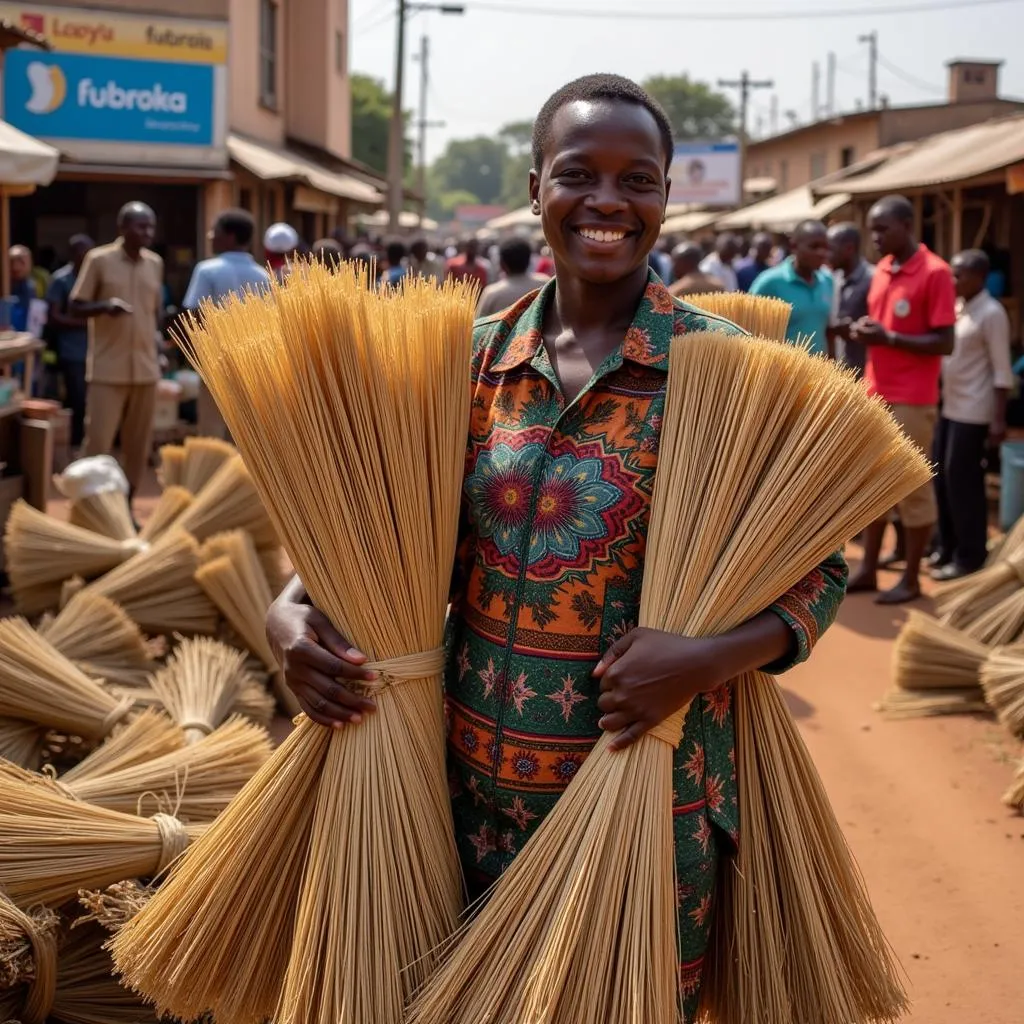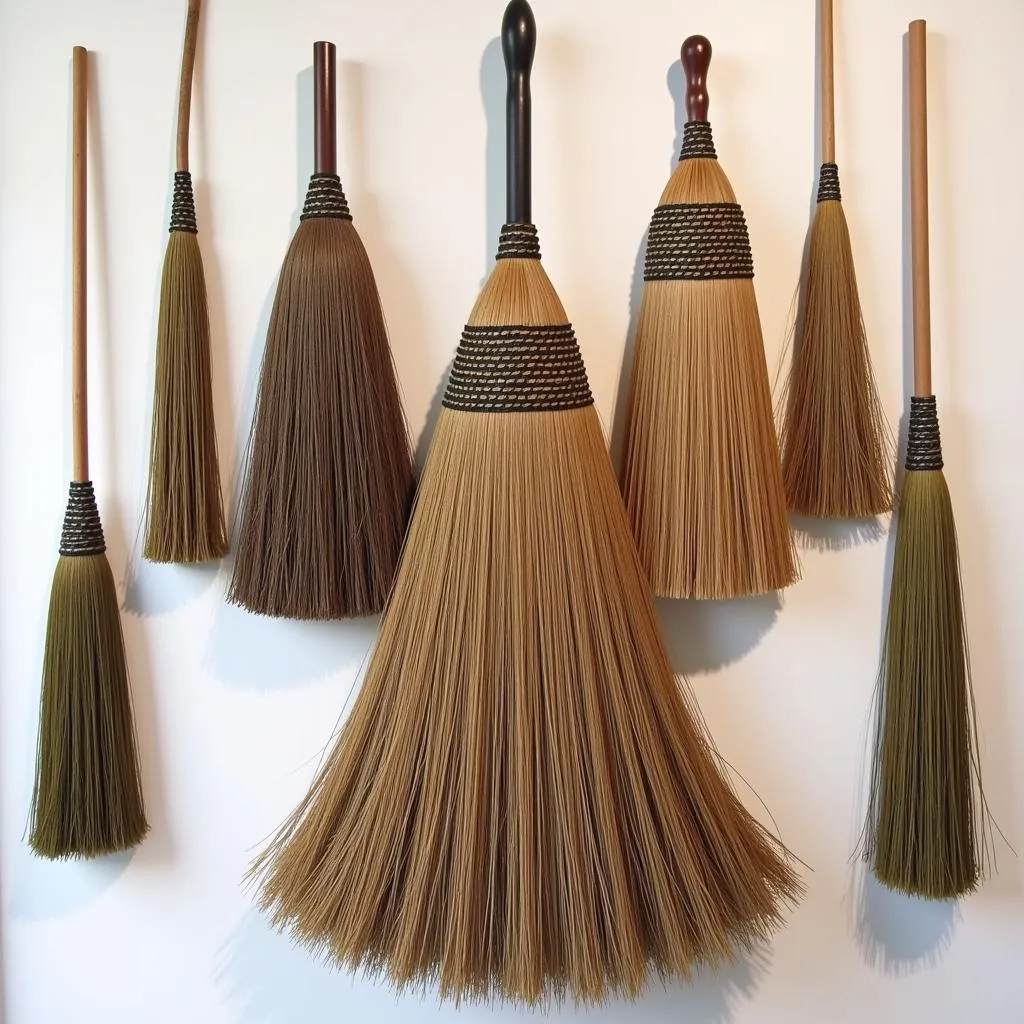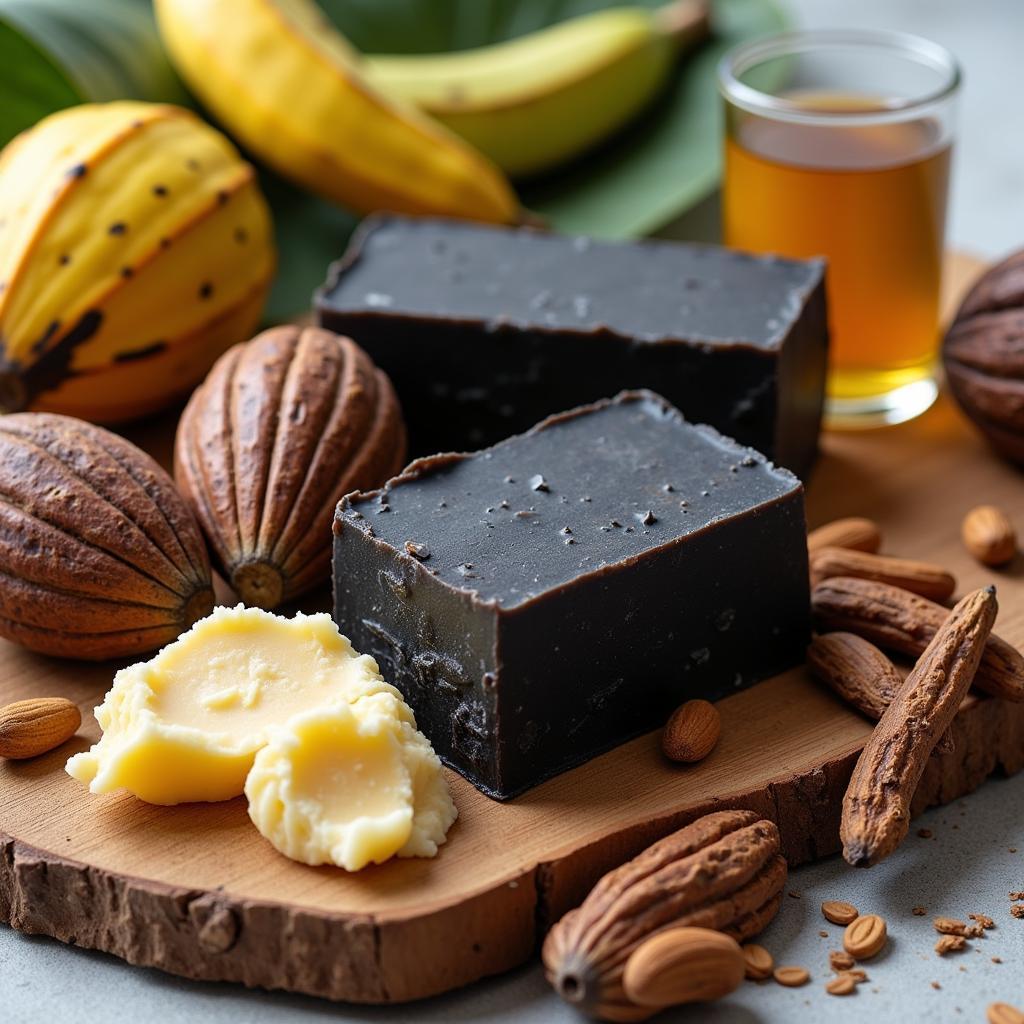The Humble History and Hidden Significance of the African Broom
The African Broom, a seemingly simple household object, holds a much deeper significance than meets the eye. Far from just a cleaning tool, it’s deeply intertwined with the continent’s cultural heritage, spiritual beliefs, and daily life. This article delves into the fascinating world of the African broom, exploring its history, uses, and the stories it whispers.
 African Broom Materials and Craftsmanship
African Broom Materials and Craftsmanship
More Than Just Cleaning: The Symbolism of the African Broom
Across Africa, brooms are imbued with symbolism and meaning that extend far beyond their practical use. In many cultures, they represent cleansing and purification, not just of physical spaces but also of spiritual energies. This duality is reflected in their use in various rituals and ceremonies.
For example, in some communities, brooms are used to sweep away evil spirits or bad luck from homes and sacred spaces. They can also symbolize fertility and prosperity, with their sweeping motions representing the gathering of abundance. This rich symbolism highlights the deep connection between everyday objects and spiritual beliefs in many African cultures.
A Broom by Any Other Name: Regional Variations and Their Unique Stories
The African broom is not a monolithic entity. Instead, it encompasses a wide range of styles and materials, each reflecting the unique environment and cultural practices of its region.
- West Africa: In countries like Ghana and Nigeria, brooms are often made from tough elephant grass and feature long handles for sweeping large courtyards. They are essential tools in bustling markets and homes alike.
- East Africa: Kenya and Tanzania are known for their beautifully crafted brooms made from palm leaves or sisal fibers. These brooms often feature intricate designs and colorful accents, making them both functional and decorative.
- Southern Africa: In South Africa, brooms made from sturdy reeds or branches are common. These brooms are built for durability and are often used in outdoor settings.
 African Broom Vendor in Local Market
African Broom Vendor in Local Market
Each region boasts its own unique broom-making traditions, passed down through generations. These skills are not just about crafting a tool; they are about preserving cultural heritage and connecting with ancestral knowledge.
Beyond the Home: Unexpected Uses of the African Broom
While cleaning remains the primary function, the versatility of the African broom extends far beyond sweeping floors.
- Music: Resourceful musicians have incorporated brooms into their craft, using them as percussion instruments or even fashioning them into unique stringed instruments.
- Agriculture: Brooms are practical tools for farmers, used for tasks like gathering hay or clearing debris from fields.
- Art: Contemporary African artists have embraced the broom as a medium, incorporating it into sculptures, installations, and performance art to explore themes of identity, tradition, and social commentary.
The African Broom in the Modern World: A Symbol of Resilience and Sustainability
In an era of mass-produced goods, the African broom stands as a testament to traditional craftsmanship and sustainable living. Made from natural, locally sourced materials, these brooms are biodegradable and environmentally friendly. They embody a connection to the earth and a respect for resources that is increasingly relevant in today’s world.
 African Broom in Contemporary Art
African Broom in Contemporary Art
Moreover, the continued use and significance of the African broom speak to the resilience of cultural traditions in the face of globalization. It reminds us that even the simplest objects can hold profound meaning and connect us to the stories of our ancestors.
Conclusion: Celebrating the Humble Yet Powerful African Broom
The African broom, often overlooked, is a powerful symbol of cultural heritage, resourcefulness, and the interconnectedness of everyday life and spiritual beliefs. From its practical uses to its symbolic meanings, the broom offers a glimpse into the diverse and vibrant cultures of the African continent. Next time you see an African broom, take a moment to appreciate its humble beauty and the rich history it represents.


